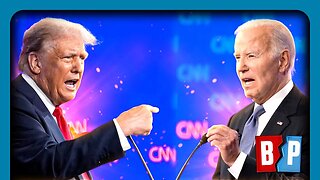2nd Quarter 2019 Wrap Up - The State of our Currencies
The United States became the world’s largest economy in the 1870’s. But it took another 5 decades for the US dollar to make serious inroads to compete with the pound Sterling as the world’s reserve currency.From World War I through the creation of the Bretton Woods System in 1944, a year before the end of WW II, the pound Sterling and the US Dollar shared a reserve currency duopoly. After Bret ton Woods, the US Dollar emerged as the global reserve currency.
The US dollar has remained the global reserve currency ever since. The launch of the Euro in 1999 drew some market share from the dollar. However, the countries in the European Union continue to depend on the US Military and NATO for their defense. The yen has a small market share of global reserves and trade, but Japan also depends on the US for its national security umbrella. And the pound sterling continues to function modestly as an international currency.
The financial crisis that began in 2008 strengthened the dollars position as global investors sought significant amounts of safe haven securities and liberal monetary policies provided significant monies to fund dollar denominated loans and capital. The subsequent Euro crisis and European bank losses resulting from sovereign debt issued by the Southern European countries flatlined further growth in the Euro share of reserve currency holdings. The dollar remained as one observer described, “dominant and dangerous.”
As the world recovered from the shock of the financial crisis the push in numerous quarters to find ways of reducing dependency on the dollar as the dominant global reserve currency grew. This was led by countries smarting from the sting of US financial sanctions, the aggressive extension of US legal and regulatory authority throughout the global financial and banking systems and competition of the US for offshore haven funds. Several countries, continued to resist joining the central bank and BIS system.
The BRIC nations as well as the ASEAN nations went to work on creating swap capacity between central banks. New lending banks were creating to
-
 1:05:25
1:05:25
Russell Brand
4 hours agoTRUMP'S SHOCKING LEAK: Biden Destroyed | UK Elections: Just a New Face for Globalism? - SF 400
86K237 -
 2:01:42
2:01:42
LFA TV
5 hours ago4TH OF JULY SPECIAL! | LIVE FROM AMERICA 7/4/2024 11am est
48K70 -
 LIVE
LIVE
TheAlecLaceShow
4 hours agoGuests: Dr. Eithan Haim | Sheriff Richard Mack | Biden Stays In | Dems In Panic | The Alec Lace Show
356 watching -
 57:19
57:19
TheMonicaCrowleyPodcast
2 hours agoThe Monica Crowley Podcast: Independence Day Fireworks
12.3K9 -
 10:45
10:45
TimcastIRL
1 day agoLeaked Documents PROVE Joe Biden Collapsing, Democrats Own Polling Show Biden Is COOKED
57.1K119 -
 2:57:55
2:57:55
Wendy Bell Radio
9 hours agoReturn Of The King
64.4K124 -
 7:27
7:27
Breaking Points
3 days ago72%: Biden 'NOT COGNITIVELY FIT' For Presidency
45.1K26 -
 6:08
6:08
Caleb Hammer
28 days agoCaleb Decides To Help Out Homeless Guest Mid Show
38.9K2 -
 LIVE
LIVE
SoniCentric
13 hours agoHappy Fourth of July Fireworks & Patriotic Music
737 watching -
 37:17
37:17
Digital Social Hour
3 days ago $0.02 earnedThe Real Reason Sneako Was Banned on YouTube | Sneako
67.5K28